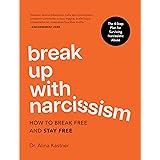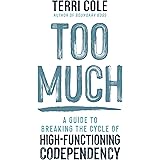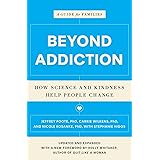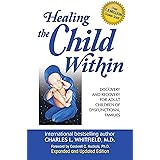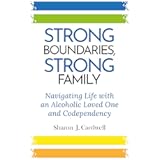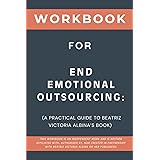The concept of addiction is often associated with substances, but behavioral addictions, such as sex addiction, are increasingly recognized as serious conditions that significantly impact an individual’s life. As explored in the insightful video above featuring Mavis Humes Baird and Dr. Jon LaPook, understanding what constitutes sex addiction and how it can be addressed is a crucial first step toward healing and recovery. For many, navigating this complex issue can feel overwhelming, but clarity and effective solutions are indeed available.
What Is Sex Addiction? Understanding Compulsive Sexual Behavior
At its core, sex addiction can be understood as a compulsive pattern where sexual behaviors become the central focus of an individual’s life, overriding other interests and responsibilities. Mavis Humes Baird points out that it is a progressive condition; as with other addictions, a tolerance to the behavior often develops. This means that an individual may find themselves needing more intense, frequent, or varied sexual stimulation to achieve the same level of satisfaction or relief that was once provided by less extreme behaviors. The behaviors themselves are not necessarily “bad,” but the compulsive nature and the negative impact they have on life are key indicators of the problem.
This escalating need can lead to an endless cycle where the pursuit of sexual gratification becomes all-consuming, overshadowing personal relationships, professional duties, and even one’s physical and mental health. It is not merely about a high sex drive; rather, it is about the compulsive and uncontrollable nature of the behavior, despite mounting negative consequences.
Recognizing the Signs: When Behavior Becomes Problematic
Identifying sex addiction often begins when negative consequences start to appear consistently in one’s life, yet the individual finds themselves unable to stop the problematic behaviors. These consequences can manifest in various forms, making it difficult to pinpoint the root cause without professional guidance.
Some common indicators that may suggest an individual is struggling with sex addiction include:
- Damage to relationships with partners, family, and friends due to sexual behaviors.
- Loss of employment or academic standing as a result of preoccupation with sex.
- Significant financial problems, perhaps incurred from engaging in prostitution, pornography subscriptions, or online dating platforms.
- Legal issues, which can range from public indecency to more serious offenses.
- Serious health concerns, including sexually transmitted infections (STIs) or other physical ailments.
- Persistent feelings of shame, guilt, or remorse after engaging in sexual behaviors.
- Repeated attempts to stop or control sexual behaviors, followed by failure.
- Spending an excessive amount of time thinking about, planning, or engaging in sexual activities.
When these patterns are observed on an ongoing basis, and the behavior continues despite the visible harm, it becomes a strong signal that professional help may be needed. It is a condition that significantly impairs daily functioning and overall well-being.
Understanding Risk Factors for Sexual Addiction
While anyone can develop a behavioral addiction, certain risk factors are known to increase an individual’s predisposition to sex addiction. Mavis Humes Baird highlights a history of childhood abuse and chronic trauma as significant contributors. This can encompass physical abuse, emotional neglect, or other forms of profound distress experienced early in life.
When an individual experiences trauma, especially during formative years, coping mechanisms can be developed that involve seeking intense sensations or distractions to numb emotional pain. For some, sexual activity may inadvertently become a way to self-soothe, escape difficult feelings, or feel a sense of control or connection that was absent during traumatic experiences. This can set a dangerous precedent, where sexual behavior is mistakenly associated with emotional regulation rather than genuine intimacy or pleasure.
Furthermore, a history of other addictions, such as substance abuse or gambling, is also a recognized risk factor. This indicates a general vulnerability to addictive behaviors, suggesting that the brain’s reward pathways may be wired in a way that makes it susceptible to various forms of compulsive engagement.
The Diagnostic Process: Identifying Sex Addiction
Diagnosing sex addiction is a delicate process that typically involves a trained clinician. As discussed in the video, a common approach involves the use of a specialized screening instrument. This instrument is not merely a checklist; it involves a series of carefully crafted questions designed to gather comprehensive information about an individual’s sexual behaviors. These questions delve into several critical areas:
- The specific types of sexual behaviors engaged in.
- The frequency and duration of these behaviors.
- The emotional and psychological impact of these behaviors on the individual.
- How these behaviors affect other areas of their life, such as relationships, work, and finances.
The goal is to understand the patterns, the consequences, and the underlying motivations behind the sexual behaviors. It is a process that requires honesty and transparency from the individual seeking help, as it helps the clinician gain a clear picture of the problem’s scope and severity.
The Illusion of Control: A Core Challenge
One of the most insidious aspects of sex addiction, and indeed any addiction, is the powerful illusion of control. Initially, an individual often believes they are fully in charge of their behaviors and can stop at any time. However, as the addiction progresses, this illusion of control paradoxically strengthens even as actual control diminishes. The individual might rationalize their actions, minimize the consequences, or constantly promise themselves that “this will be the last time.”
Often, it is not until a significant crisis unfolds – something Mavis Humes Baird describes as “blowing up in your face” – that the stark reality of being out of control finally becomes undeniable. This crisis can be the loss of a marriage, a job termination, a severe financial hit, or a legal issue. Such an event can serve as a catalyst for seeking help, shattering the long-held delusion of self-mastery over the addiction.
Pathways to Healing: Effective Treatment Approaches
Despite the challenges, treatment for sex addiction is highly effective, as emphasized by Mavis Humes Baird. A cornerstone of this recovery process is gut-level honesty. This level of transparency is essential not only with a trained clinician but also with trusted individuals in an individual’s support system, such as family members and, most importantly, with oneself.
Professional care, typically involving individual or group therapy with a therapist specializing in sexual addiction, is often recommended. These professionals can provide tools, strategies, and a safe space to explore underlying issues that fuel the addiction, such as trauma or emotional dysregulation. While professional treatment can be expensive, even with good health insurance, it is a critical investment in one’s well-being.
An excellent adjunct to professional care is participation in 12-step programs. These programs offer a supportive community where individuals can connect with others who are also recovering from sex addiction. Within these groups, shared experiences and insights provide invaluable guidance. Members often learn practical coping strategies and gain perspective on what has worked for others in their journey towards recovery, fostering a sense of belonging and hope.
Navigating Recovery: Relapse Prevention and Healthy Sexuality
Recovery from any addiction is often understood as a journey, and while relapse can be a challenging part of this process, it does not signify failure. With proper treatment, individuals can be trained in effective relapse prevention strategies. These strategies involve identifying triggers, developing healthy coping mechanisms, and building a robust support system to navigate difficult times.
A crucial aspect of recovery is also learning to re-establish a healthy and safe sexual life. This is a gradual process that is worked on collaboratively with a treatment team. It involves defining what “safe sexual behaviors” mean for the individual and then slowly integrating the simplest and easiest of these behaviors back into their life. The aim is to build a sexual life that is characterized by consent, respect, intimacy, and genuine connection, free from the compulsivity and negative consequences of addiction.
The message of hope is a powerful one: thousands of recovering sex addicts have been met who have successfully maintained their sobriety and avoided relapse. This demonstrates that with commitment, professional support, and personal honesty, a fulfilling and addiction-free life is absolutely achievable for those affected by sex addiction.


